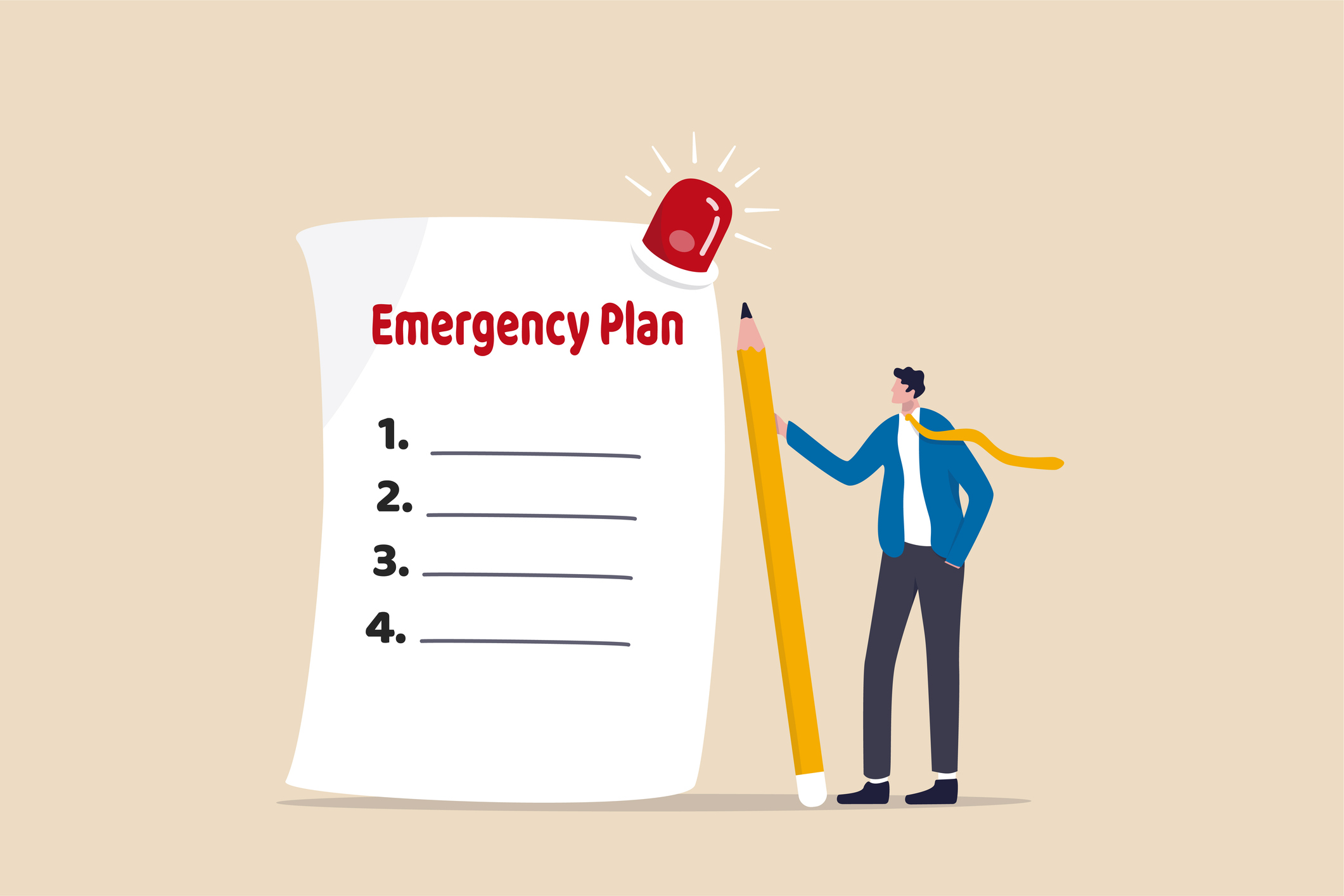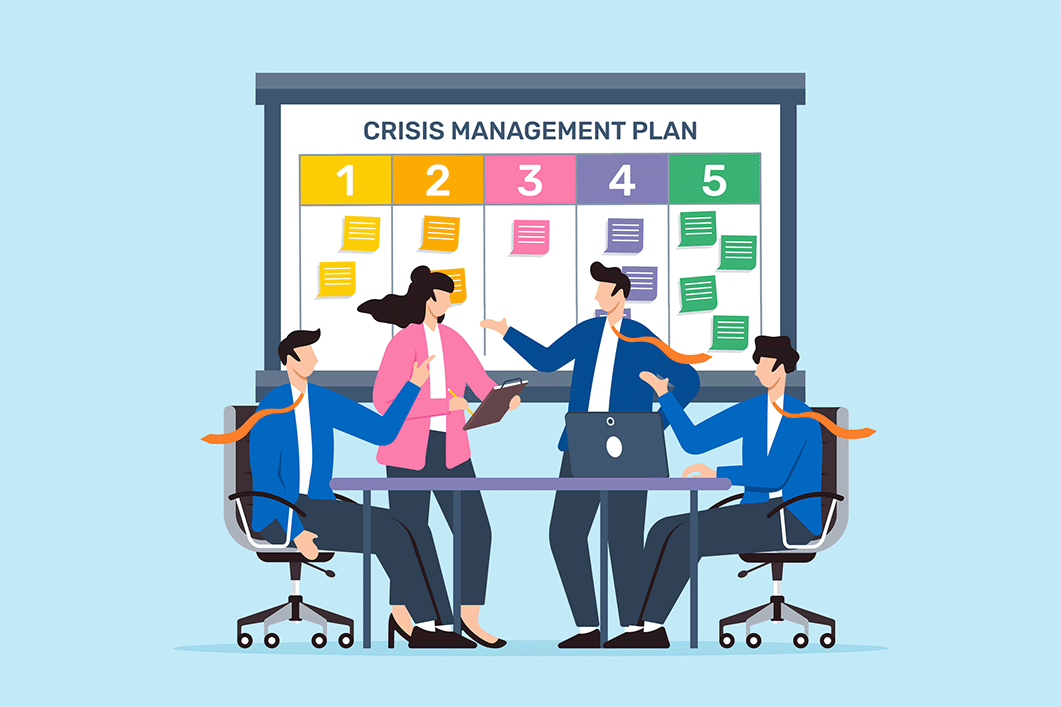Emergency Contact Center: A Lifeline in Crisis Management
by Erina Suzuki | Published On March 24, 2023 | Last Updated December 12, 2024

With extreme weather events on the rise, there are ways organizations can take steps to keep their customers safe. Contact centers play an important role in preparing people and ensuring their safety by maintaining timely communication.
With the frequency and severity of extreme weather events on the rise, organizations must take proactive steps to safeguard their customers and communities. Emergency contact centers play a pivotal role in ensuring public safety, providing timely communication, and assisting in disaster recovery efforts.
From storms and earthquakes to utility outages and wildfires, these centers act as a critical bridge between affected individuals and essential services. In this blog, we'll explore the significance of emergency contact centers, their role in disaster recovery, and actionable strategies to optimize their performance during crises.
What Are ‘Emergency Contact Centers’?
Emergency contact center solutions are designed to manage critical, time-sensitive communication during urgent situations, such as severe weather events, service outages, or public health emergencies. These centers leverage advanced technology—such as automated alerts, AI-driven analytics, and omnichannel communication tools—to streamline operations.
For example:
- Utility Providers: During a power outage, emergency contact centers can inform affected customers about restoration timelines, provide safety instructions, and coordinate service crews.
- Healthcare Organizations: In the case of a disease outbreak, they can disseminate updates on preventive measures, testing locations, and treatment availability.
- Municipal Services: During extreme weather events like hurricanes or snowstorms, they can provide residents with shelter locations, evacuation routes, or updates on service disruptions.
By collaborating with government agencies, NGOs, and private organizations, these centers ensure a coordinated and effective response to crises. It's important to note that these solutions complement, rather than replace, public emergency services like 911. Their role is to enhance communication and resource allocation for organizations that can support communities during emergencies.
The Role of Emergency Contact Centers in Disaster Recovery
Emergency contact center solutions are instrumental in disaster recovery, supporting affected communities through communication and coordination. Their key contributions include:
- Providing Real-Time Updates: Emergency contact centers can deliver essential information, such as evacuation orders, shelter locations, and weather forecasts, to affected communities.
- Facilitating Relief Efforts: Emergency contact centers coordinate with first responders, healthcare providers, and local governments to allocate resources effectively.
- Ensuring Accessibility: Multi-channel communication options ensure that individuals can connect using their preferred method (i.e., SMS, live chat, voice calls), even in challenging circumstances.

8 Ways Emergency Contact Centers Protect Communities
Creating more resilient businesses and communities is one of the best ways to support and protect the public in the face of extreme weather conditions. Contact center solutions play an important role in preparing communities during emergencies. These preparations include providing timely and accurate information, facilitating communication, and assisting with emergency response efforts. Continue reading to learn 8 ways organizations can leverage contact centers software and tools in the face of extreme weather events.
1. Routing calls to appropriate agents
In emergencies, time is of the essence. Avoid routing callers to the wrong agent, as this may result in losing valuable time for the caller and the agent. Skills-based routing ensures that callers are connected to the appropriate agent or department based on their needs, such as reporting power outages, seeking medical assistance, or filing insurance claims.
2. Sending outbound notifications to affected areas
Automated outbound notifications allow emergency contact centers to alert communities swiftly through voice, SMS, or email. These notifications can provide important information, such as evacuation instructions, shelter locations, and road closure updates.
3. Enabling self-service options to free up resources
In an emergency, it is critical for people to receive immediate assistance. Self-service is available 24 hours a day, seven days a week. It enables callers to check the status of their accounts, report outages, or get information about relief efforts without speaking to an agent.
For example, interactive voice response (IVR) systems can be used to provide automated information to callers. Callers can use IVR menus to report power outages, check road conditions, or find shelter locations.
By automating routine inquiries, contact centers can allocate agents to more complex or urgent cases.
4. Offering multiple communication channels
In times of crisis, accessibility is paramount. Emergency contact centers equipped with omnichannel capabilities enable individuals to communicate by voice calls, SMS, email, social media, and chat. Having these different options allows people to choose the most convenient way for them to receive information, even those in areas with limited connectivity.
5. Using historical and predictive data and analytics to plan ahead
Analyzing historical data helps organizations anticipate call volumes, wait times, and resource needs during emergencies. Predictive analytics can also identify patterns, enabling proactive measures such as allocating additional staff during hurricane seasons, or pre-emptively notifying at-risk areas based on weather forecasts.
6. Preventing fraud with advanced call authentication
Fraud prevention is critical in emergencies when resources are stretched thin. By employing technologies like voice biometrics and multi-factor authentication, emergency contact centers can ensure that assistance reaches the right individuals.
7. Leveraging sentiment analysis to prioritize critical cases
Speech analytics can analyze the tone and urgency of customer interactions in real time, helping prioritize critical cases. For example, calls flagged with emotional distress or panic can be escalated immediately to experienced agents.
8. API integrations for coordinated responses
Partnerships with government agencies, NGOs, and utility providers enhance the effectiveness of emergency contact centers by streamlining communication and resource allocation. Contact center software with API integrations can connect with external systems, such as local government databases or disaster management platforms. This ensures accurate information is shared in real-time across all stakeholders.

Emergency and Disaster Recovery Response: Building Resilience
Resilience in disaster recovery isn’t just about reacting in the moment—it’s about planning ahead to ensure communities and businesses stay supported, no matter the crisis. Here are three effective strategies to help you stay proactive and strengthen your emergency contact center.
Developing contingency plans
A comprehensive contingency plan includes step-by-step procedures for different emergencies, such as hurricanes, cyberattacks, or pandemics. For instance, it defines how calls should be routed during power outages or how to escalate critical cases during a natural disaster. Workflow automation tools in contact center software, such as those in ComputerTalk’s ice Contact Center, can automate these protocols, ensuring consistency and speed.
Additionally, contact centers must adapt to evolving crises. Real-time dashboards play a crucial role by supporting contingency planning, enabling decision-makers to reassign resources and update agent scripts as needed. Real-time analytics in software can provide actionable insights to refine ongoing disaster response efforts.
Conducting real-life drills and simulations
Testing preparedness through drills and simulations ensures that contact centers are ready to handle the demands of real emergencies. Create scenarios that replicate real-world emergencies, allowing agents to practice handling distressed callers or coordinating with emergency services.
Include gamification training modules to make drills engaging and effective. Simulate a sudden spike in call volumes to test your contact center and agents to see if they can handle the sudden load. This can include scenarios like power outages affecting an entire city or massive evacuations due to wildfires.
Investing in redundant systems
Emergency contact centers should include built-in redundancy to ensure high availability during crises. To build resilience, they must ensure uninterrupted operations even in the face of technical failures or natural disasters. For example, if a primary server fails due to a power outage, a secondary server can take over immediately.
Redundant systems must support multiple communication channels such as SMS, email, voice calls, and social media, allowing connectivity to be maintained even if one channel fails. Tools like icePhone can act as a primary or backup communication solution, keeping agents connected to customers during a Microsoft Teams or PSTN outage for example.
Conclusion
Emergency contact center software is a lifeline during crises, providing essential support to communities in need. By leveraging advanced technology, predictive analytics, and skilled agents, these centers can ensure timely communication and effective disaster recovery efforts. As organizations invest in resilience, the importance of well-equipped emergency contact centers cannot be overstated.
More from our blog
 Great customer service is important to any business. Naturally, that means that the contact center you use for customer service is an important decision to make.
Great customer service is important to any business. Naturally, that means that the contact center you use for customer service is an important decision to make.
 Microsoft Ignite 2025 was last month in San Francisco, and while there were similar themes to last year, there was a little more breadth of application than in 2024. If last year in Chicago was the first real “in-person conferences...
Microsoft Ignite 2025 was last month in San Francisco, and while there were similar themes to last year, there was a little more breadth of application than in 2024. If last year in Chicago was the first real “in-person conferences...
 ComputerTalk is excited to announce that we have been chosen as one of the finalists for Microsoft Canada’s 2021 Community Response Impact Award!
ComputerTalk is excited to announce that we have been chosen as one of the finalists for Microsoft Canada’s 2021 Community Response Impact Award!

